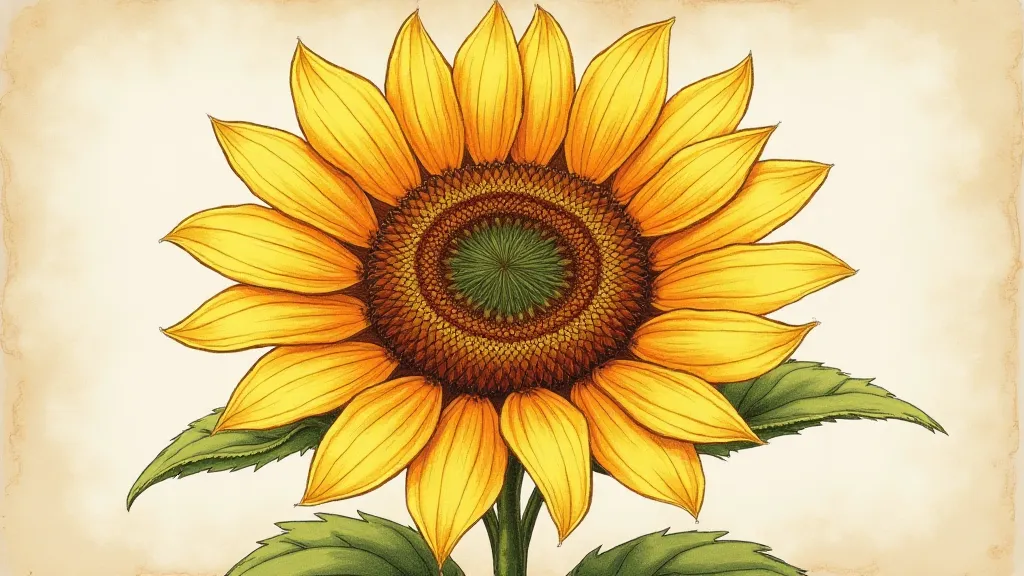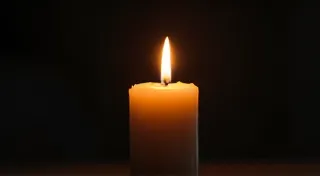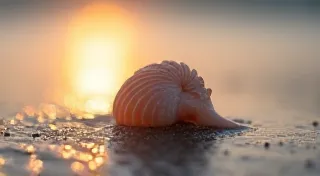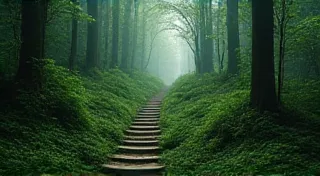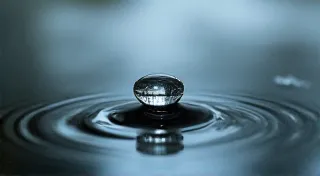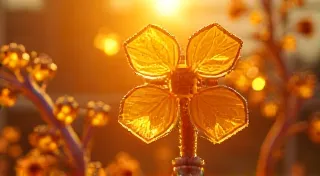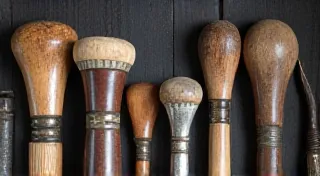Floral Cartography: Mapping the Inner Landscape of a Bloom
There's a quiet magic in the intersection of meticulous observation and heartfelt expression. I often think of it when I'm restoring antique accordions – machines of bellows and keys, each component a testament to a bygone era of craftsmanship. They whisper stories of traveling musicians, smoky cafes, and the raw emotion poured into their melodies. That same dedication, that same reverence for detail, is what I seek to capture when I approach botanical illustration with pen and ink. It’s not simply about drawing a flower; it's about understanding its language, its architecture, its inner landscape.
Think of an antique accordion. Its beauty isn’t just in its polished wood or intricate carvings; it’s in the knowledge that it’s been assembled from hundreds, sometimes thousands, of individual parts, each shaped and fitted with extraordinary precision. You can feel the history in the worn leather, the slight warping of the wood, the faint scent of age. Similarly, a flower isn't just a pretty face. It's a complex system, a miniature universe governed by its own set of rules. And revealing that structure, rendering it with honesty and care, is the essence of floral cartography.
Beyond the Petal: Understanding Floral Anatomy
Most beginner botanical illustrations focus on the outward appearance – the color, the shape of the petals, the curve of the stem. While these are important, they only tell a small part of the story. To truly capture the essence of a flower, you need to understand its anatomy. Consider the difference between a daisy and an orchid. Both are undeniably beautiful, but their structures are vastly different. A daisy boasts a simple composite head with ray and disc florets; an orchid, with its intricate labellum and column, presents a far more challenging and rewarding subject.
Start with the basics: sepals, petals, stamens, pistils. Learn to identify them, understand their function. A good resource is a botanical textbook, but even a close, careful observation with a magnifying glass can reveal surprising details. Notice how the sepals protect the developing bud, how the stamens release pollen, how the pistil receives it. This knowledge informs your drawing; it allows you to depict not just the form, but the purpose of each element.
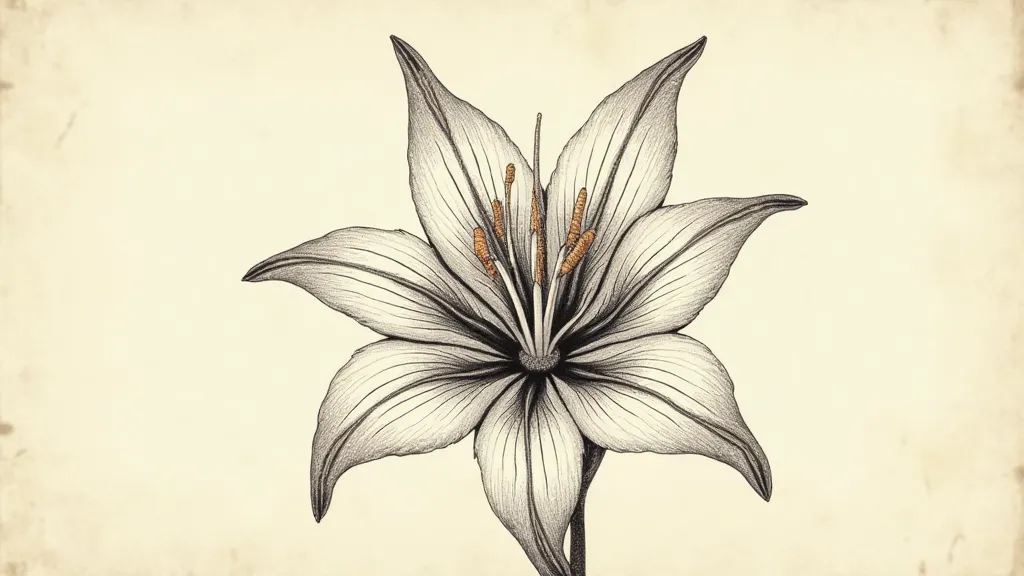
Rendering Plant Textures: From Velvety Petals to Bristly Stems
Texture is what brings a botanical illustration to life. A flat, lifeless drawing lacks the depth and character that make a flower truly captivating. Think about the velvety texture of a rose petal, the waxy surface of a magnolia, the fuzzy quality of a lamb's ear leaf. Each texture presents a different challenge, and mastering them requires careful observation and experimentation with your pen and ink techniques.
For velvety surfaces, use soft, overlapping strokes that follow the contours of the petal. Vary the pressure on your pen to create subtle tonal variations. For waxy surfaces, consider using finer lines and tighter spacing to mimic the sheen. For fuzzy surfaces, a combination of short, broken lines and stippling can be incredibly effective. Don't be afraid to experiment with different pen nibs, too. A fine liner is excellent for detail, while a broader nib can be used to create bolder lines and heavier shading.
One trick I’ve learned from restoring accordions – paying attention to the grain. The wood isn’s uniform; there's a direction, a history imprinted upon it. Similarly, plant surfaces aren’t perfectly smooth. Look for the subtle imperfections, the minute variations that add realism to your rendering.
Shading in Pen and Ink: Mastering the Art of Value
Value – the range of light and dark – is critical for creating the illusion of three-dimensionality. In pen and ink, you don't have the luxury of blending colors, so you need to rely on hatching, cross-hatching, and stippling to create tonal variations.
Hatching involves drawing parallel lines to create shading. The closer the lines, the darker the area appears. Cross-hatching builds on this technique by layering lines at different angles. Stippling uses dots to create shading; the denser the dots, the darker the area. The key is to control the spacing and density of your lines and dots to accurately represent the light and shadow on the flower.
Think about the light source. Where is the light coming from? This will determine which areas are in shadow and which are in highlight. Carefully observe the subtle gradations of value and try to replicate them with your pen and ink.
Drawing Botanical Details: The Importance of Precision
Botanical illustration demands precision. While artistic expression is important, accuracy is paramount. The details – the veining of a leaf, the tiny hairs on a stem, the intricate structure of a pollen grain – these are the elements that elevate a botanical illustration from a simple drawing to a work of scientific merit.
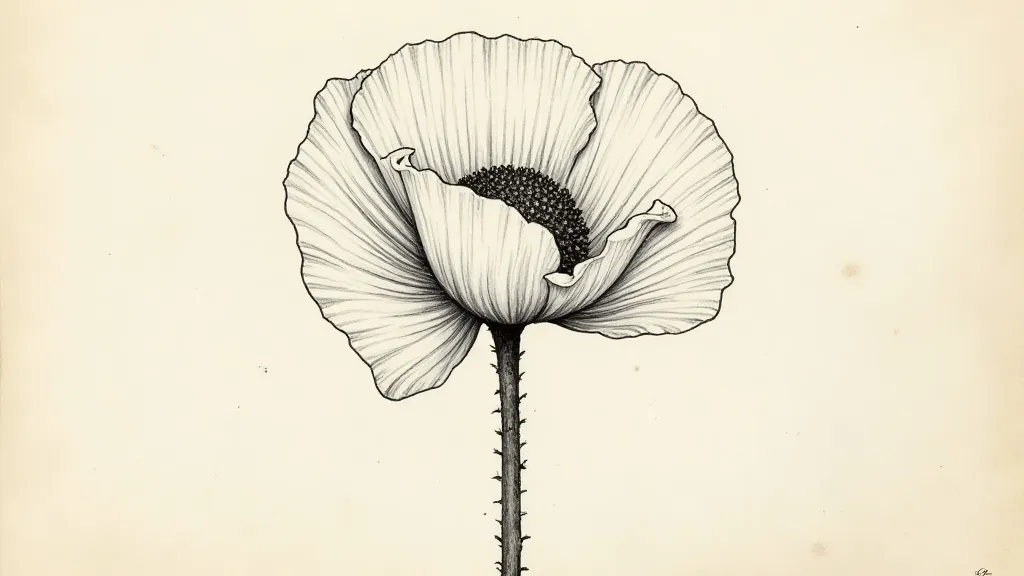
Use a magnifying glass to examine the flower closely. Sketch the outlines lightly first, then gradually add the details, refining them as you go. Don't be afraid to erase and redraw until you achieve the desired level of accuracy. Remember, you’re not just drawing what you *think* you see; you're drawing what’s actually there.
Watercolor and Ink Combination: Expanding Your Palette
While pen and ink can be incredibly expressive on their own, combining them with watercolor opens up a whole new world of possibilities. You can use pen and ink to create the underlying structure and details, then use watercolor to add color and luminosity. This approach allows you to capture both the precision of ink and the vibrancy of watercolor.
Experiment with different techniques. You can use ink washes to create subtle tonal variations, or use watercolor to add highlights and shadows. The key is to find a balance between the two mediums – to use them in a way that complements each other.
Just as a restored accordion’s voice is richer for the expert care given to its bellows and reeds, a botanical illustration is imbued with life when precise observation meets artistic expression. It’s more than just drawing a flower; it’s mapping its inner landscape, revealing its story, and sharing its beauty with the world. It's a silent conversation between artist and subject, a testament to the enduring power of observation and the quiet magic of pen and ink.
